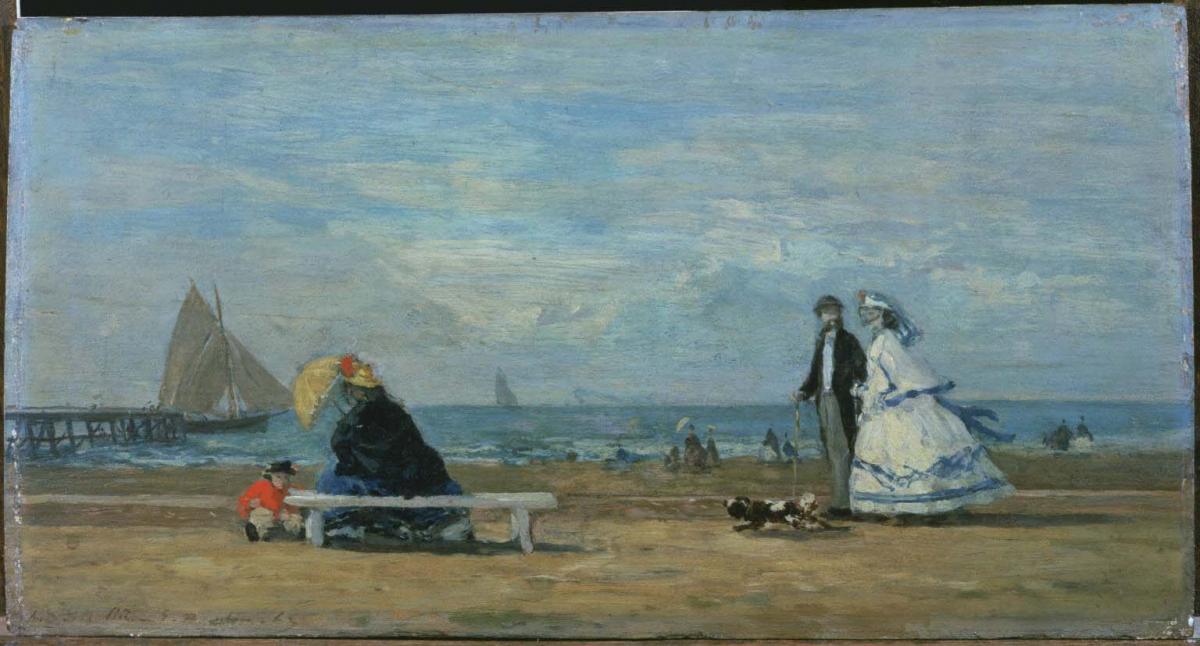Beach at Trouville
Eugène-Louis Boudin ( 1863 )

Boudin painted many beach scenes at Trouville, which is located on the Normandy coast just south of Honfleur, his hometown. Despite its quickly executed appearance, the painting is probably composed from sketches made on the site; several reworked areas indicate that he carefully contemplated the arrangement of the figures. This work depicts a close-up view of only a few figures, while most of his landscapes show crowds of people set deeply in space. The running dog, the woman seated on the bench, and the strolling couple are motifs that reappear in other beach scenes of 1863. The sparseness of detail and simplification of composition compel the viewer to perceive the formal aspects of painting, making it one of Boudin’s more abstract pictures.
Duncan Phillips most often exhibited Beach at Trouville with paintings by the impressionists and the more avant-garde Cézanne. He interpreted Boudin as a precursor of Impressionism, “the link between Constable and Monet” in his establishment of the importance of pure color and light in painting. Admiring the artist’s ability to capture the immediacy of strolling beach crowds through freedom of brushstroke and intense color, he wrote: “There was never anything iconoclastic or epoch-making about Boudin’s own style of painting …. But in his own quiet way he hit upon truths that bolder men used for their foundations. Boudin is an aristocrat of paint and holds high rank in the history of landscape painting.”